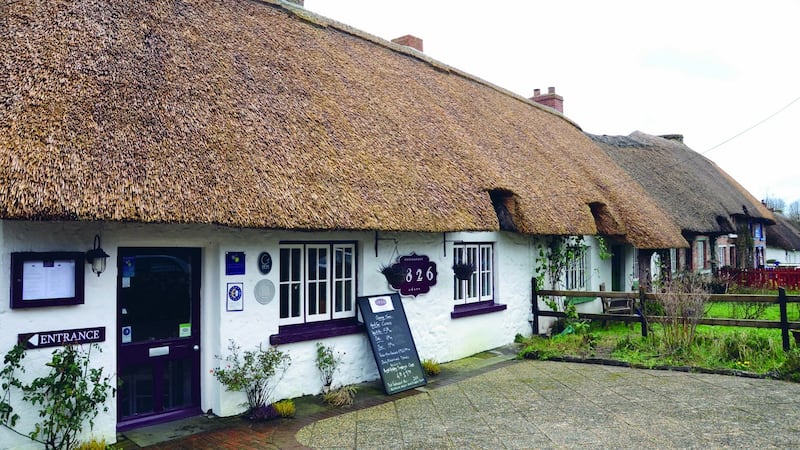Nothing conjures up a more stereotypical image of rural Ireland than a thatched cottage, that enduring romantic symbol of national identity.
Ironically, the ownership of what were once humble vernacular dwellings and called houses – never cottages – by their inhabitants is now restricted to those who can afford the cost of their maintenance and their hefty insurance premiums.
A thatcher last year reckoned that thatching an Irish cottage costs €10,000-€20,000 and can take up to two months to complete.

Emma Byrne is an award-winning graphic designer and artist, the proud owner of a picturesque thatched cottage in Wexford dating from the 1850s, and the author of a handsome new book on the subject, Irish Thatch.
“A thatched cottage has its own particular requirements and style,” she writes in her book. “Birds try to eat your roof; rodents burrow into it to keep warm; clay walls are damper than modern ones; interiors may seem intimate to some, but pokey to others.”
Lavishly illustrated with hundreds of photographs from all over the country, depicting different thatching styles, it celebrates a form of building that has survived from ancient times to the present and one that blends beautifully with the environment. Byrne briefly outlines the history of thatch, the types and the materials used: oat, rye, wheat, straw and hazel.
There are extensive examples of this form of roofing, whether for private homes, pubs, museum or restaurants, and Byrne provides a list of those open to the public, most of which are in the north.
Her artist's eye has selected everything from a tiny restored workman's cottage in Mountcharles, in Co Donegal, the last survivor from the original village, to a bizarre razor-shell- encrusted thatched home in Cullenstown, in Wexford, and an ornate and elegant Swiss Cottage (which Sybil Connolly was instrumental in having restored) in Cahir, Co Tipperary, with its Parisian wallpapers.
Jeffrey’s House in Creeslough, constructed by an architect with a local thatcher, stands out on its own as a wild modern folly constructed with thatch on a wooden apex frame. And there are many other pretty dwellings aesthetically pleasing to the eye, mostly captured on sunny days.
The west of Ireland provides many rich finds, particularly around Galway and the Aran Islands, where, according to tradition, it was unlucky to build on to the west side of a house.
Byrne points out the difference between direct-entry and lobby-entry houses, the first mostly seen in the west and north, where front and back are the same and two doors are opposite each other. Which one to use was based on the way the Atlantic wind was blowing, with stone pegs used to secure the thatch.
Each photograph is well captioned. There is a glossary of thatching terms, a short reading list and information on grants. It does not include an index or a list of thatchers, which would have been worthwhile, but otherwise it is a book written from the hearth.
Irish Thatch is published by O’Brien Press, €24.99












